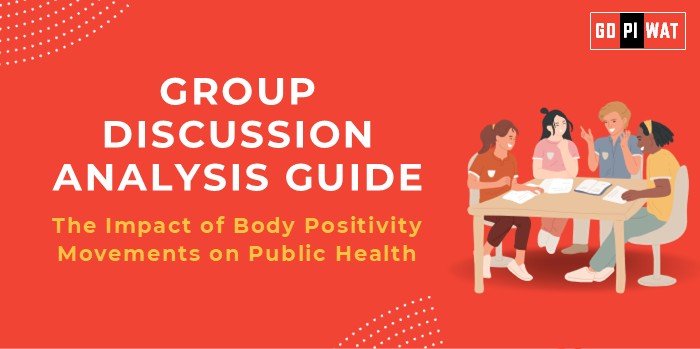📋 Group Discussion (GD) Analysis Guide: The Impact of Body Positivity Movements on Public Health
🌐 Introduction to the Topic
📖 Opening Context
Body positivity movements have emerged globally as a response to the increasing prevalence of body shaming, unrealistic beauty standards, and their negative psychological impact. While these movements promote self-acceptance and inclusivity, their implications for public health have become a subject of active debate among healthcare professionals and policymakers.
📜 Topic Background
Originating in the 1960s as a part of broader civil rights movements, body positivity gained mainstream traction in the 2010s through social media campaigns. It seeks to challenge societal beauty norms and promote mental health. However, critics argue that it may inadvertently undermine public health initiatives aimed at combating obesity and sedentary lifestyles.
📊 Quick Facts and Key Statistics
- 📉 Prevalence of Body Shaming: Over 65% of individuals globally report experiencing body shaming (Source: WHO, 2023).
- 🌍 Obesity Rates: Global obesity rates have tripled since 1975, affecting over 650 million adults (WHO, 2023).
- 🧠 Mental Health Impact: 70% of individuals who adopt body positivity report improved mental well-being (APA, 2023).
- 📱 Influence of Social Media: #BodyPositivity has 25 million+ posts on Instagram, showcasing its viral reach (2024).
🤝 Stakeholders and Their Roles
- 🏥 Healthcare Providers: Balancing mental health advocacy with preventive health measures.
- 📱 Social Media Platforms: Amplifying body positivity narratives while managing misinformation risks.
- 🏛️ Public Health Agencies: Promoting holistic health campaigns that integrate mental and physical health.
- 👥 Individuals: Advocating for self-acceptance while making informed health choices.
🏆 Achievements and Challenges
✨ Achievements
- 🧠 Mental Health Advocacy: Increased awareness and reduced stigma around diverse body types.
- 👗 Inclusivity in Fashion: Brands adopting inclusive sizing, benefiting 30% more customers.
- 🌟 Cultural Shifts: Societal acceptance of natural body forms and reduced reliance on extreme diets.
⚠️ Challenges
- 📉 Potential Normalization of Unhealthy Habits: Concerns about reduced emphasis on obesity prevention.
- 🔍 Social Media Misinformation: The risk of promoting unhealthy behaviors under the guise of acceptance.
- 🌏 Global Comparisons: Countries like Japan promote a “health-first” culture that integrates body acceptance without compromising public health initiatives.
💡 Structured Arguments for Discussion
- 👍 Supporting Stance: “Body positivity improves mental health and challenges harmful societal norms.”
- 👎 Opposing Stance: “It risks undermining obesity prevention campaigns critical to public health.”
- ⚖️ Balanced Perspective: “While body positivity is vital for mental well-being, it should complement, not contradict, healthy lifestyle promotion.”
📈 Effective Discussion Approaches
🔑 Opening Approaches
- 📊 Statistical Impact: “With 70% of participants reporting better mental health, body positivity is reshaping public health narratives.”
- ✨ Contrast Approach: “As global obesity rates soar, does body positivity risk conflicting with public health goals?”
🤔 Counter-Argument Handling
- 💡 Acknowledge mental health benefits while proposing complementary strategies to maintain physical health standards.
🔍 Strategic Analysis of Strengths and Weaknesses
- 🌟 Strengths: Mental health improvement, inclusivity.
- ⚠️ Weaknesses: Potential conflict with health campaigns, misinformation risks.
- 🚀 Opportunities: Collaboration between body positivity advocates and public health officials.
- ⚡ Threats: Escalating obesity rates, rising healthcare costs.
📚 Connecting with B-School Applications
- 🌐 Real-World Applications: Integrating body positivity into marketing campaigns, diversity initiatives, or health projects.
- 💬 Sample Interview Questions:
- 🧠 “How can body positivity movements and public health campaigns align effectively?”
- 📱 “Evaluate the role of social media in shaping public health narratives.”
- 💡 Insights for B-School Students:
- 📊 Develop inclusive strategies that respect diversity without compromising health goals.
- 🩺 Investigate the interplay of mental and physical health in organizational wellness programs.


